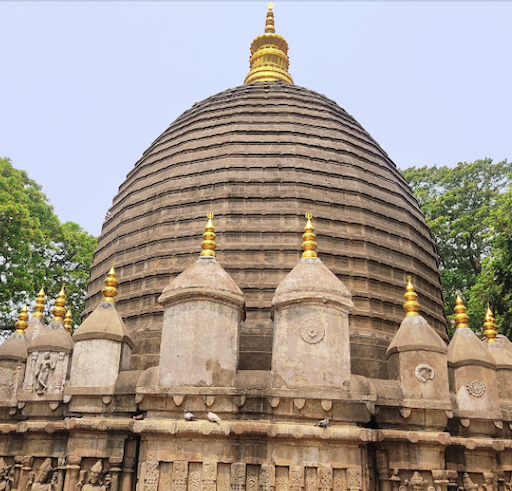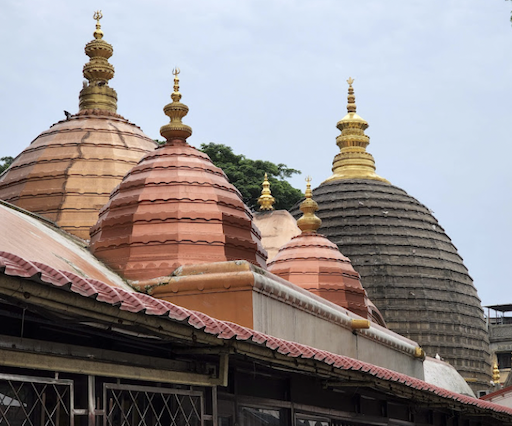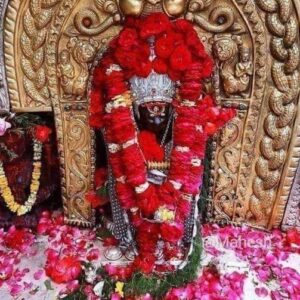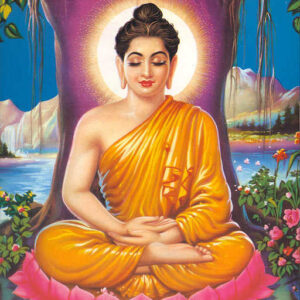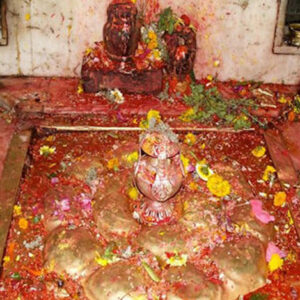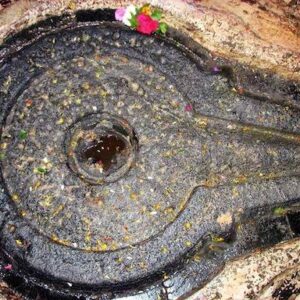Kamakhya is a Shaktipeeth temple.
There is a place to sit and meditate. You can go into meditative states here effortlessly.
How to Get there
The temple is located 2.3 km East of Kamakhya Junction.
Map:
https://goo.gl/maps/JDjJk9gV3X9G5GU28
About Kamakhya Temple
Maa Kamakhya or Kameswari is the renowned Goddess of Desire whose famous shrine is located in the heart of Nilachala Hill situated in the western part of Guwahati, the Capital City of the state of Asom in North East India. Maa Kamakhya Devalaya is considered most sacred and oldest of the 51 Shakti Peethas on earth. It is the centrepiece of widely practiced, powerful Tantrik Shaktism cult in India.
Apart from the main temple of Maa Kamakhya ,there are temples of the Dasamahavidya (ten incarnations of the deity) namely Kamakhya (i.e. Tripura Sundari, alongwith Matangi and Kamala), Kali, Tara, Bhuvaneshvari, Bagalamukhi, Chinnamasta, Bhairavi, Dhumavati, and five temples of Lord Shiva namely Kameswara, Siddheswara, Kedareswara, Amratokeswara, Aghora and Kautilinga around the Nilachala Hill which is also called as Kamakhya Temple Complex.
Guwahati is an ancient city and it is mentioned as Pragjyotishpur in many ancient literature and manuscripts. This capital city of the state of Assam is dotted with a number of ancient temples. The most famous among these is the Kamakhya Temple. The Hill of Nilachala, mentioned as Nilakuta, Nilgiri, Kamagiri in ancient texts and also popularly known as the Kamakhya Dham, where the famous temple of Mother Goddess Kamakhya is situated in the western part of the Guwahati (91042/ East – 26010/ North) the gateway to the North East India and capital city of Assam.
The Nilachala is comprised of three parts (i.e. the Brahma Hill, Vishnu Hill and Shiva Hill). This temple town is approximately 600 feet above the plains. The Bhubaneswari Temple is located at the highest point from where one is able to enjoy the panoramic view of the Guwahati City. The mighty Brahmaputra mentioned as Louhitya in epics and Puranas is flowing on the northern side of the Hill. The Nilachala Hill houses some other temples such as the Banadurga temple, the Jaya Durga temple, the Lalita Kanta temple, the Smasanakali temple, the Gadadhar temple, the Ghantakarna temple, the Trinath temple, the Sankheswari temple, the temples of Dwarpala Ganesha, the Hanuman temple, the Pandunath temple (located in Baraha Hill) etc.
The Kamakhya Temple at Nilachal hills in Guwahati, Assam is one of the oldest and most revered centres of Tantric practices,[3] dedicated to the goddess Kamakhya. The temple is the center of the Kulachara Tantra Marga and the site of the Ambubachi Mela, an annual festival that celebrates the menstruation of the goddess.[4] Structurally, the temple is dated to the 8th-9th century with many subsequent rebuildings[5]—and the final hybrid architecture defines a local style called Nilachal.[6] It is also one among the oldest 4 of the 51 pithas in the Shakta tradition.[7][8] An obscure place of worship for much of history it became an important pilgrimage destination, especially for those from Bengal, in the 19th century during colonial rule.[9]
Originally an autochthonous place of worship of a local goddess where the primary worship of the aniconic yoni set in natural stone continues till today,[10] the Kamakya Temple became identified with the state power when the Mleccha dynasty of Kamarupa patronised it first, followed by the Palas, the Koch, and the Ahoms.[11] The Kalika Purana, written during the Pala rule, connected Naraka, the legitimizing progenitor of the Kamarupa kings, with the goddess Kamakhya representing the region and the Kamarupa kingdom.[12]
It has been suggested that historically the worship progressed in three phases—yoni under the Mlechhas, yogini under the Palas and the Mahavidyas under the Kochs.[13] The main temple is surrounded in a complex of individual temples dedicated to the ten Mahavidyas of Saktism, namely, Kali, Tara, Tripura Sundari, Bhuvaneshwari, Bhairavi, Chhinnamasta, Dhumavati, Bagalamukhi, Matangi and Kamalatmika.[14] Among these, Tripurasundari, Matangi and Kamala reside inside the main temple whereas the other seven reside in individual temples.[15] Temples for individual Mahavidyas together as a group, as found in the complex, is rare and uncommon.[16]
In July 2015, the Supreme Court of India transferred the administration of the Temple from the Kamakhya Debutter Board to the Bordeuri Samaj.[17]
Read More:
https://www.maakamakhya.org/introduction.php
https://en.wikipedia.org/wiki/Kamakhya_Temple
